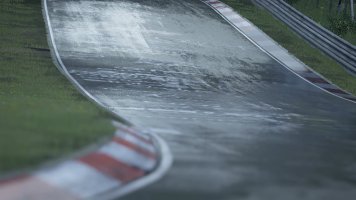@William Levesque @Avo77
Everything is fine on my side. I'm pretty sure the theory that a symmetric car should develop equal front and rear slip angles during steady state cornering is only valid at ridiculously low steer angles.
If I input the typical wheelbase, track, turn radius and accelerations that I get on the skidpad into this simple 4 wheel model here : http://www.gipsa-lab.grenoble-inp.fr/~moustapha.doumiati/ACC2010.pdf (equation 1 in particular), the model says the front lateral forces should be around 6.5 % higher than rear to reach equilibrium. The smaller the turn radius, the higher the steer angle, the bigger this number gets, more than 10% if I bring the front tyres to their optimum slip.
I believe this 10% is what @Avo77 was seeing in his slip angle data. Nothing inconsistent going on imo. I see no self realignment in the data at typical driving yaw angles.
Everything is fine on my side. I'm pretty sure the theory that a symmetric car should develop equal front and rear slip angles during steady state cornering is only valid at ridiculously low steer angles.
If I input the typical wheelbase, track, turn radius and accelerations that I get on the skidpad into this simple 4 wheel model here : http://www.gipsa-lab.grenoble-inp.fr/~moustapha.doumiati/ACC2010.pdf (equation 1 in particular), the model says the front lateral forces should be around 6.5 % higher than rear to reach equilibrium. The smaller the turn radius, the higher the steer angle, the bigger this number gets, more than 10% if I bring the front tyres to their optimum slip.
I believe this 10% is what @Avo77 was seeing in his slip angle data. Nothing inconsistent going on imo. I see no self realignment in the data at typical driving yaw angles.











